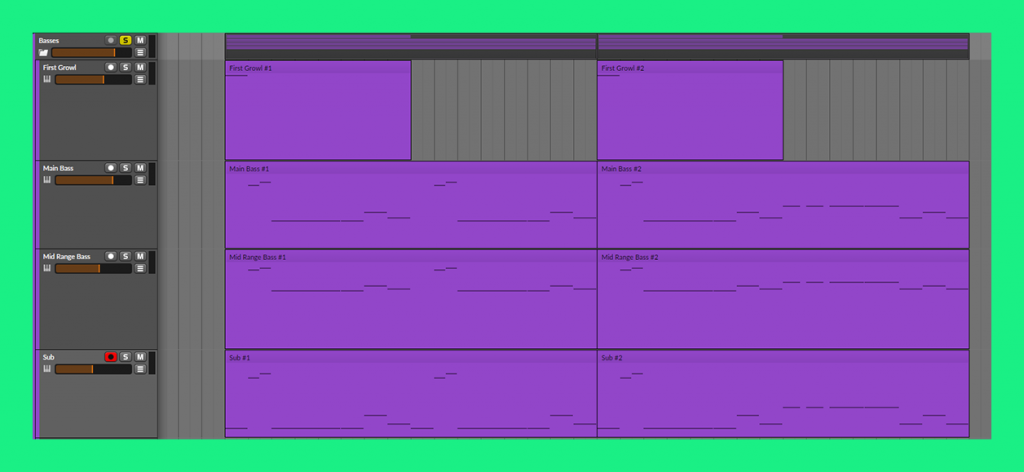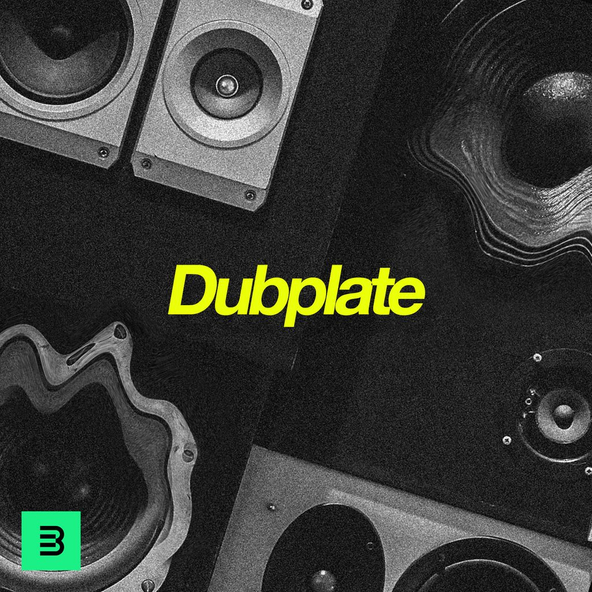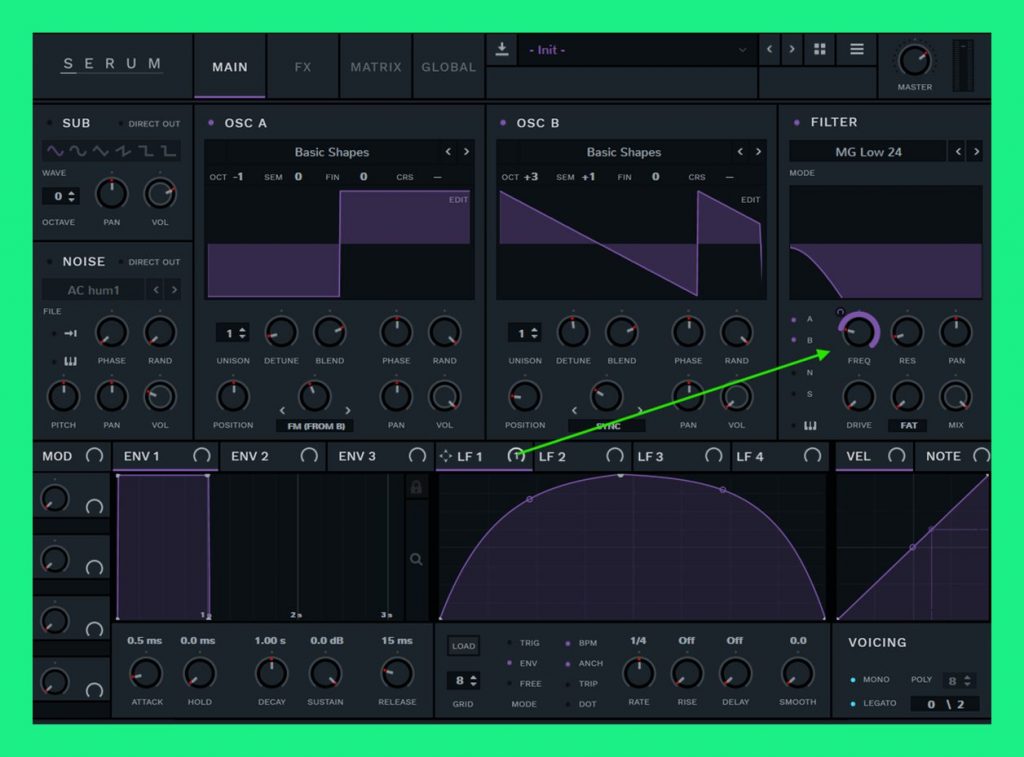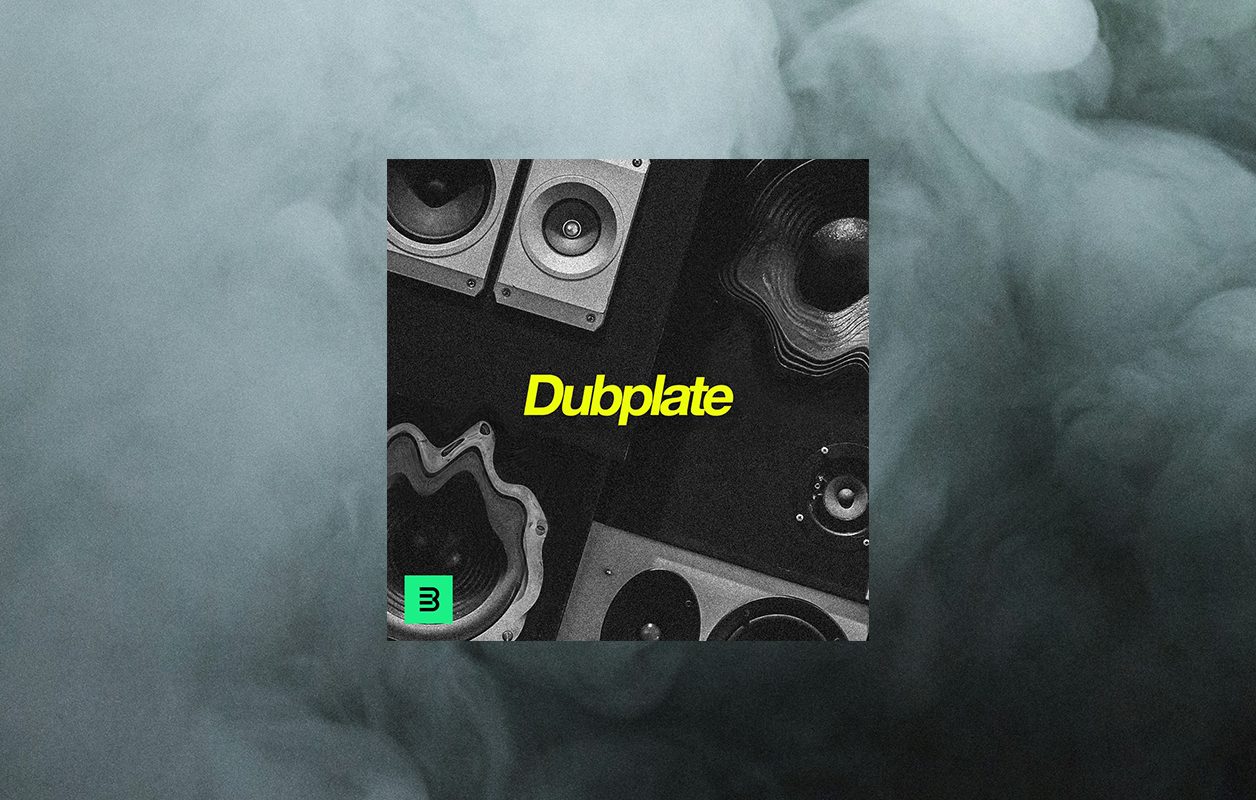
Our newest sound pack, Dubplate, is a nod to the classic dubstep and bass sound that has shaped modern electronic dance music. Inspired by legends like Rusko, Skream, Benga, Nero, and Caspa, these iconic, gritty bass sounds and synths are a staple of the genre.
Let’s dive into some production tips that showcase techniques and capture the essence of this timeless sound.
Sound Pack Spotlight: Production Tips and Tricks
For Beginners:
Wobble anything.
A synth wobble is simply an LFO envelope that modulates a filter cutoff to open up, making that classic “wub” sound. To achieve this with any sound, create an LFO envelope that starts and ends at a zero value. Set the rate of this envelope anywhere between 1/4 to 1/16, and then map it to your cutoff frequency knob.
These steps can be replicated in any synth of your choice and can be applied to any sound or sample within your DAW by using stock LFO envelopes and filter devices.
Next level: Intermediate
Classic dubstep bass design.
One of the defining characteristics of classic dubstep is frequency-modulated (FM) bass sounds. FM bass sounds are not only essential to dubstep but instantly recognizable. They are gritty and dissonant but at the same time, tonal and melodic. Here are some simple steps to create a classic, gritty, sustained FM bassline sound on Serum.
Start with two oscillators, a square wave and a saw wave. The square wave will act as our main oscillator. Set the square wave octave to -1 and apply FM (from Oscillator B) at about 45% or so.
Next, we move on to the second oscillator, the saw wave. Set the saw wave’s volume to zero and bump up the octave to +3 and semitone to +1. Apply some sync modulation at about 1.33%. The sync modulation and +1 semitone change will add that much-needed dissonance and tonality that dubstep basses are known for.
Finally, add some tube distortion and crank the drive knob to 100%.
Explore another heavy-hitting Serum preset pack ⚡️
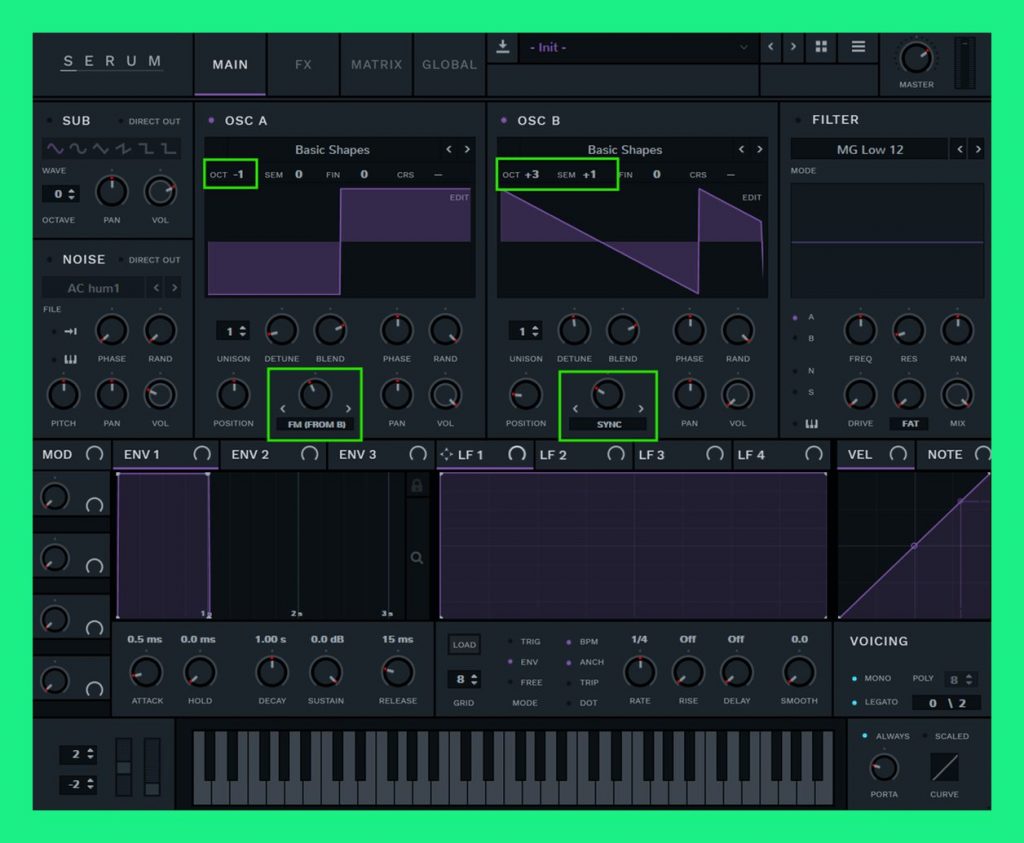
For Advanced
Layering bass sounds.
To simplify layering, think of the five key areas of the frequency spectrum – lows, low-mids, mids, high-mids, and highs. Each layer’s job is to fill out an area of the frequency spectrum so that your mix has depth, thickness, and clarity.
Exceeding five layers for a sound should not be necessary, as each sound fills up at least one area of the frequency spectrum. However, a sound can also fill up multiple areas of a frequency spectrum, such as a growl filling up the mids and high-mids of the spectrum. A sound can even fill up two ends of the opposite spectrum, such as a distorted sub bass filling out the lows and highs of a frequency spectrum at the same time.
During the layering process, use your ears and analyze the main sound’s frequency spectrum to determine what the sound needs. In this example, we have a main bass that is being layered by a mid-range bass and a sub bass. The main bass contains frequencies present within the whole spectrum, but the main tonal properties of the sound mostly sit within the mids, high-mids, and highs.
As a result, we have a mid-range bass layer to help fill out the low mids, with some support in the mids and high-mids. Finally, we have a distorted sub layer that acts as the foundation of the bass, covering the lows, low-mids, and highs. The result is a bass sound that has depth and sounds huge! (See: Synth Bass LP 4 within the sample pack.)
Be sure not to overload the low-mids and highs, as these areas can cause a mix to sound muddy and unbalanced. If your main bass sound starts to sound muddy, do not add any more layers, and use an EQ to sculpt out any frequencies from the layers that might be masking your main bass.
Experiment with dubstep presets for Vital 💥
